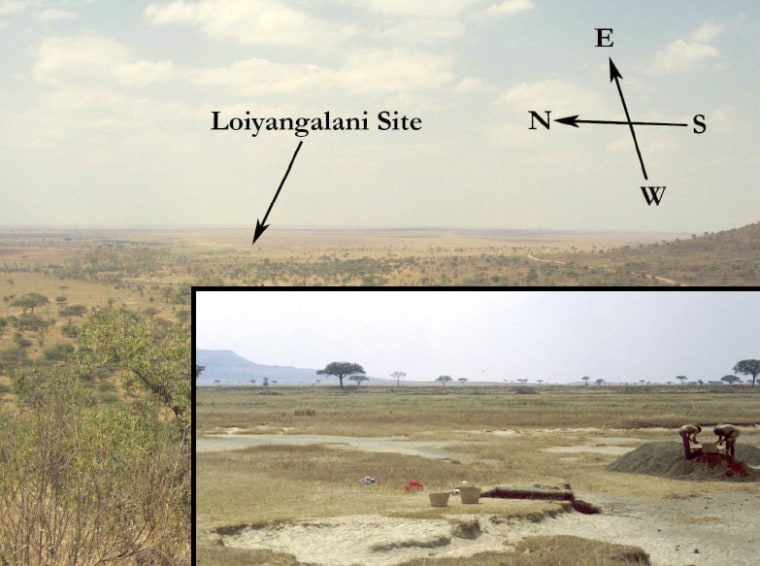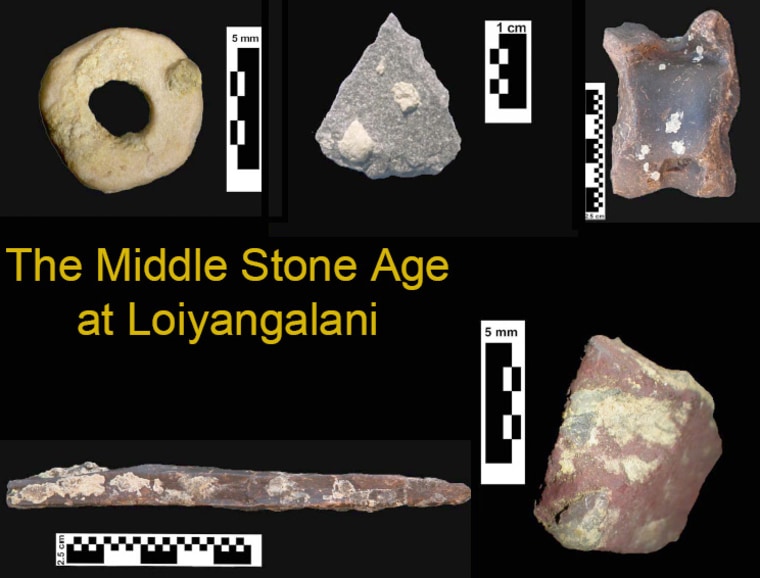Ostrich egg beads and other artifacts from an ancient site in Tanzania suggest that humans started decorating themselves far earlier than once thought, and in Africa before Europe, scientists reported Wednesday.
The artifacts have not been properly dated, but the scientists believe they are older than 40,000 years. If that's the case, the discovery will challenge two popular theories — that humans did not develop symbolic thinking until about 35,000 years ago, and that when it happened, it happened first in Europe.
The site, at the Serengeti National Park, is at least 40,000 years old and perhaps far older, dating to what is called the Middle Stone Age. While Middle Stone Age humans were physically modern, there has been debate about their culture and behavior.
The Middle Stone Age in East Africa began as early as 280,000 years ago. The Later Stone Age started about 45,000 years ago.
“This is very precocious,” said John Bower, professor emeritus of anthropology at Iowa State University, who helped lead the study. “The ostrich egg shell beads, the use of bone, the abundant use of pigment — we found lots of ochre pencils, little bits of ochre that have been rubbed, presumably to make a pigment.”
Bower described the findings at the Loiyangalani River Valley in the Serengeti National Park to a meeting in Montreal of the Paleoanthropology Society.
'Way beyond the norm'
Another unusual find at the site: catfish bones. “Usually Middle Stone Age sites don’t have anything in the way of fish remains in them. This is indicative of a level of cultural attainment way beyond what is the norm,” Bower said in a telephone interview.
In Europe, the equivalent of the Middle Stone Age is the Middle Paleolithic, when Neanderthals lived alongside physically modern Cro-Magnons. While there is limited evidence that Neanderthals may have made jewelry, it is hotly disputed.

Curtis Marean of Arizona State University, who led the study, doubts Neanderthals were capable of the fine work like making the tiny white ostrich egg beads found in Tanzania.
“The beads are unambiguous examples of symbolic behavior,” Marean said.
“The Loiyangalani result provides strong evidence that modern people from Africa, migrating into Eurasia, carried with them strong symbolic abilities that were not shared by the resident Neanderthals they replaced,” he added in an e-mail.
More evidence sought
Bower said that while it was theoretically possible another hominid species such as Neanderthals were responsible for the Loiyangalani site, he doubts it. There has been no evidence of Neanderthals anywhere but in Europe, where they died out about 30,000 years ago.
Bower plans to return to the site to scout for evidence of human bones or teeth. Researchers are also carbon-dating some of the artifacts to narrow down their age.
Stone tools found with the beads and other unusual items are clearly Middle Stone Age in style, Bower said. “But this gives us very broad bracketing dates of 40,000 to 200,000 years ago.”
“The beads are a tantalizing find, and once we get some definitive dating it could have a major impact on the issue of the evolution of symbolic thinking,” Marean said. “We hope that further digging at the site will yield more information. Ultimately it is going to take wider excavation to resolve the questions.”
